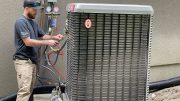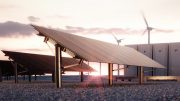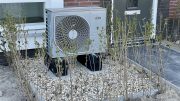In a pilot project, nonprofit Couleecap installed solar panels and heat pumps at an apartment building in Wisconsin.
Low-income people often spend a large portion of their money on energy.
Weatherization-assistance programs can help them access insulation, weatherstripping, and other energy-saving improvements. But even after these services, many people struggle to pay their bills.
So Hetti Brown of the nonprofit Couleecap says existing programs should be expanded.
“We also want to make sure that we’re including solar, heat pumps, and other modern technology so that the low-income community can also benefit from these technologies,” she says.
So Couleecap is piloting this approach and sharing results with the state of Wisconsin.
The team recently installed solar panels and air source heat pumps at the first of two demonstration sites — an apartment building in LaCrosse.
“We had already weatherized the building. But we could see that the residents there were having to rely on state energy benefits year over year over year,” Brown says.
She expects the new technology will help residents save enough energy to transition off these benefits.
“This not only helps that family be economically stable, which is good for our entire community,” she says, “but it also saves the state money, saves taxpayers money, and allows those benefits to go to other community members who may be struggling.”
Reporting credit: Ethan Freedman / ChavoBart Digital Media
Originally published by Yale Climate Connections




